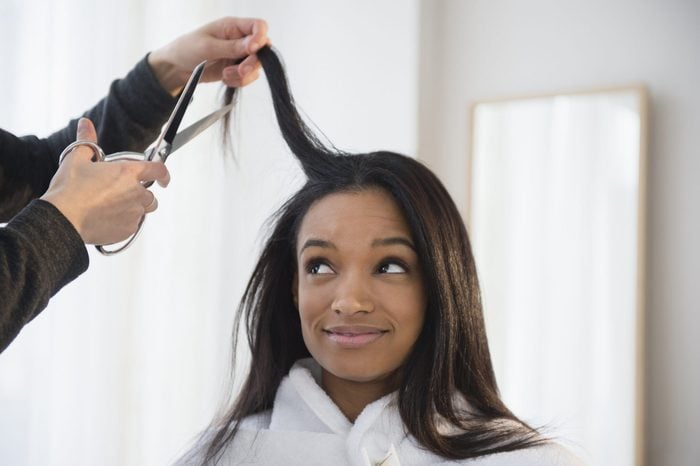
Hair beware
There’s nothing quite like walking out of the salon with a haircut you love. A new ‘do can boost your confidence and put a little pep in your step. But a bad haircut? Ugh. That can leave you shaking your head and wondering what the heck just went wrong. Not to mention, there’s added stress when you have to figure out how much to tip the hairdresser who just gave you a terrible style.
Going to a new salon can leave you particularly vulnerable to getting a bad haircut. After all, you’ve never seen the stylist and don’t know if they’ll be a good fit for you. What if they make a ton of hairstyle mistakes? Or promise a hairstyle that’ll make you look younger but deliver a ‘do better suited to your granny? “A bad haircut or color can ruin six months or more of your confidence,” affirms Natalie Palomino, a master stylist and the founder of North Authentic, a site offering custom hair-care tips and routines.
Because of this, one of the very best hairstylist secrets you can learn (other than knowing the polite habits hairdressers dislike) is how to spot the red flags that you are about to get a bad haircut. Here, experts share the tell-tale signs you may be in for a bad cut (or color!).
Get Reader’s Digest’s Read Up newsletter for humor, cleaning, travel, tech and fun facts all week long.
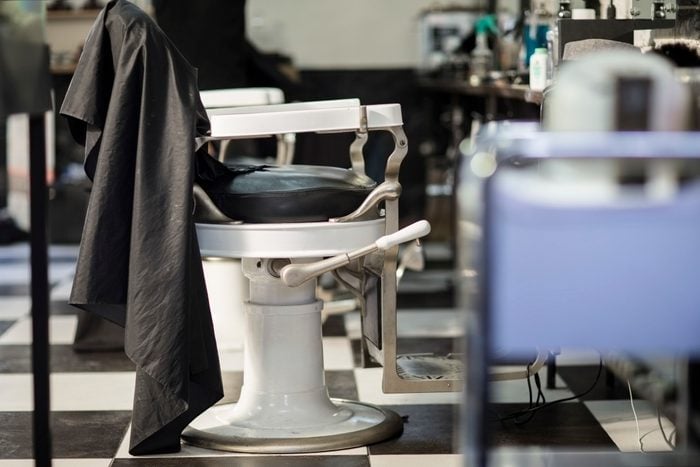
The salon is dirty
If you walked into a doctor’s office and it was filthy, you probably wouldn’t feel super comfortable getting care there, right? The same thinking should apply to a hair salon. “If a salon looks dirty or unkept, it is concerning,” says celebrity hairstylist Shantise Michelle. “This could indicate that they don’t prioritize cleanliness and sanitation, which can be a health risk.”
So what constitutes “dirty” at a hair salon? Michelle points out that seeing a few hair clippings on the ground, especially if a client is mid-cut, is totally normal. What’s not? Tools that look dirty, lots of dust or piles of hair that haven’t been cleaned up even after clients leave. Even if you aren’t getting a cut and just want the stylist to show you how to make your blowout last, going to a clean salon is a must.
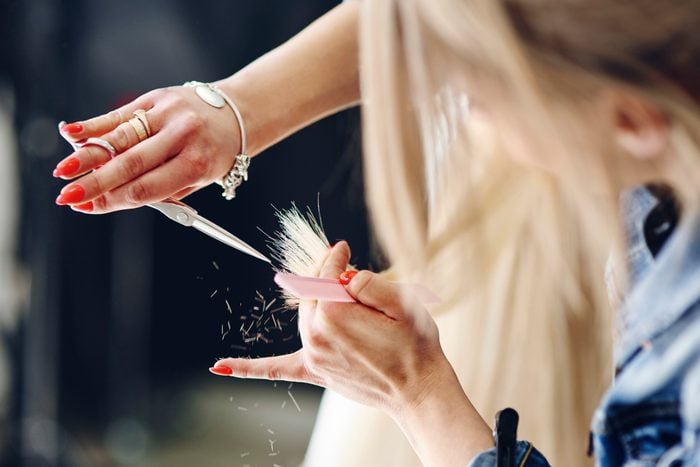
The stylist won’t share examples of past work
Maybe you’re hoping to learn how to grow out gray hair gracefully. Or maybe you’re looking for hairstyles for women over 40. No matter your goal, it’s super helpful if new stylists are able to show you examples of their work. If they don’t post client cuts on social media, ask them to share pictures of previous cuts they’ve done. “Not being able to show you examples of their work is a red flag,” says Michelle. Even if they are relatively green, stylists should have examples from their training.
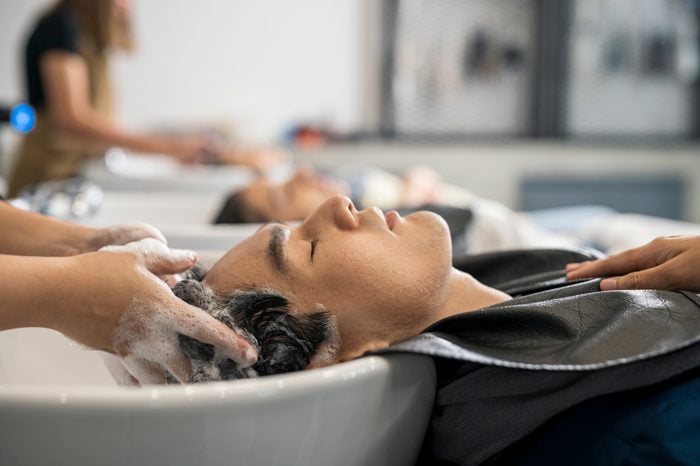
The stylist doesn’t ask for a hair history
Before a stylist gives you a cut for the first time, it’s important that they get some key info from you. Without this assessment, you may end up with a cut or color you can’t stand. “Before a bowl of color is mixed, a stylist should know if you’ve used boxed dye recently or any other treatments you’ve recently had,” says Palomino. “If you are getting a cut, they should know what your normal hairstyling routine looks like.”
This is crucial because it helps them tailor your cut to your needs. For example, a cut that will require lots of blow-dry time to look good is a no-go if you never have time to blow-dry your hair.
Basic questions surrounding your hair history include how you normally style your hair and if you’ve had any recent treatments (think: relaxing your strands or a perm). If you’re going in for a color, the stylist should ask when you last colored your hair and how, as well as any other hair treatments you’ve recently had.
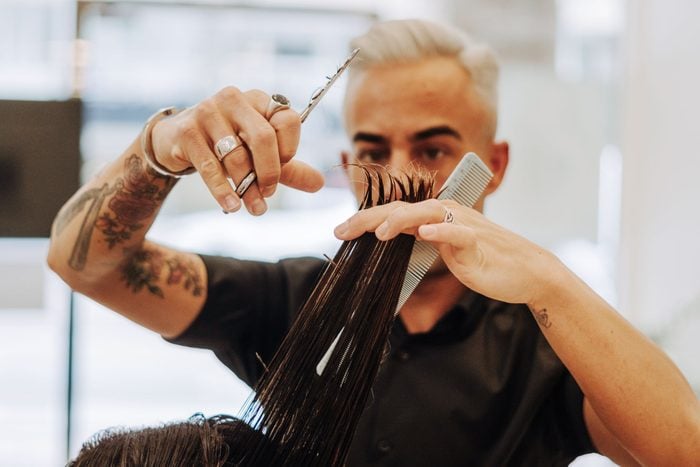
The stylist refuses to give an opinion
It’s your hair, sure, but your stylist is the professional. So if you ask for their opinion, they should give it. If you ask what they think and they don’t say much, be wary. “While this doesn’t necessarily mean you are seeing a bad stylist, it may be the sign of someone who is green and doesn’t know how to interact,” says Palomino. A stylist should have a general idea of what cuts work for different hair textures, face shapes and lifestyles, she says. If they don’t seem to know these things, you should be concerned.
In an ideal world, you should feel like your stylist is a collaborator on your journey to great hair. You know your hair and what will work for you, and they have professional expertise and know things like the best blow-dryer for straight versus curly hair, or what looks good on round versus long faces. They should offer up this info to help guide you when you’re deciding the fate of your strands.
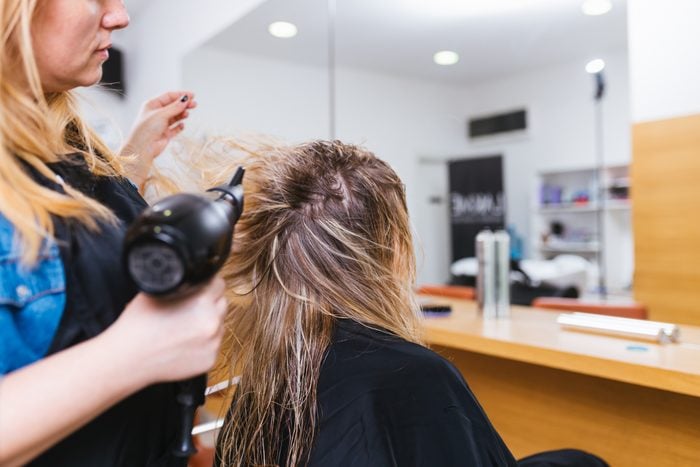
The stylist is pushy
You want someone to weigh in, not boss you around. After all, you have to live with the end results. “You should never feel bullied into getting a certain type of cut,” says Michelle. “A good hairstylist will listen to your needs and preferences and make recommendations based on that—but not force you into something you don’t want.”
Getting to the perfect cut for you should be a bit of a give-and-take. For example, if you want to go short, start by telling the stylist that. Then they can suggest a short cut that would flatter your face shape. From there, you can give feedback on their suggestion.
Oh, and hairdressers shouldn’t be pushy about buying products either. If you like something they use and want to purchase it from the salon after your appointment, great. If you don’t have that in your budget, they shouldn’t make you feel like you have to. After all, there are plenty of great products at affordable price points—including some really fantastic shampoos under $15 that many stylists use at home.
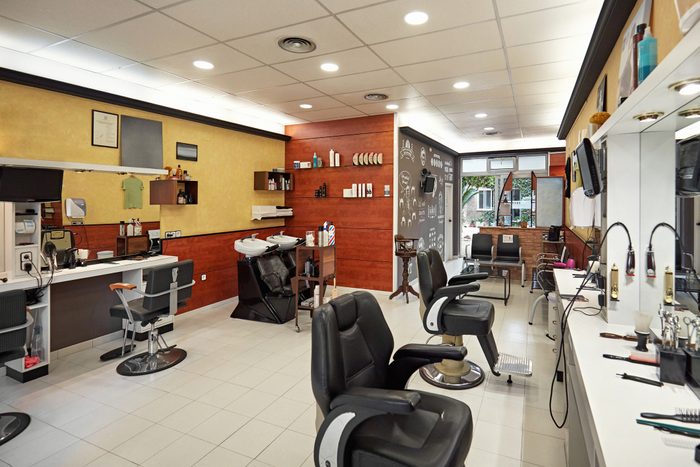
The salon is always empty
If the salon is regularly a ghost town or constantly offers deep discounts, should it worry you? You bet. “If the salon is brand new, they may still be getting their name out there, and it’s not a reason to run away,” says Palomino. The same applies to a salon that has recently reopened after being closed for the pandemic or for another reason.
“However, if the salon has been around for a while and is always empty, then you may want to look elsewhere,” she says. One way to suss this out? Rather than making an online appointment or calling a new salon, try stopping by on a Saturday—which tends to be the busiest day. This way, as you make your appointment, you’ll be able to get a feel for the salon and see how lively it is.

The salon has lots of bad reviews
Imagine looking up a restaurant before having dinner there and seeing a bunch of reviews that mention finding hair in the food or seeing lots of roaches. You’d find a new place to eat, wouldn’t you? Use the same logic when considering a new stylist. Look up the salon on Yelp or Google and give the reviews a good read.
“If a hairstylist has a ton of bad online reviews, it could be a red flag and should be a concern,” says Michelle. “However, it’s important to read the reviews carefully and consider the context before making a decision.” If all the reviews give the same bad feedback (like the cut was a disappointment or the employees were rude), you can probably trust them. If there are a handful of poor reviews that seem more situational (perhaps someone is mad that they showed up late and weren’t accommodated—the complaint etiquette mistake you don’t want to make!), take those with a grain of salt.
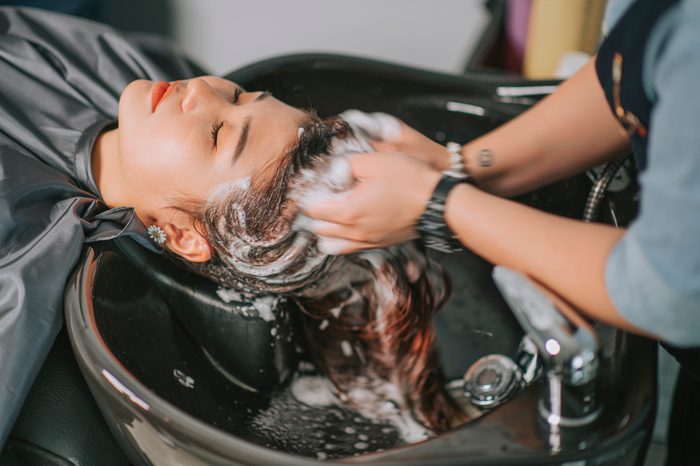
An assistant takes you straight to a shampoo station
If you arrive at a new salon and an assistant immediately whisks you to the shampoo station, it should give you pause. “A stylist should always look at your dry hair when you come in, because this gives them a better idea of how your hair naturally behaves,” says Michelle. “This information allows them to make more informed recommendations.”
For most stylists, a visit flows like this: They have you come right in and sit in their chair. They look at your hair and have a short consultation about what you’re looking for. Some stylists may even cut a bit of your hair while it’s dry—this is most common if you’re cutting a large amount of hair. In this case, they may take off some length before you have your strands washed. From there, it’s off to the shampoo station. (Oh, and a really good stylist will customize the shampoo for your hair needs. So if your hair is thin, they’ll use a thickening shampoo; if it’s dyed, they’ll use a shampoo for color-treated hair—you get the idea.) Once you’ve been sudsed up, you’ll head back to the stylist’s station for shaping and the actual cut.
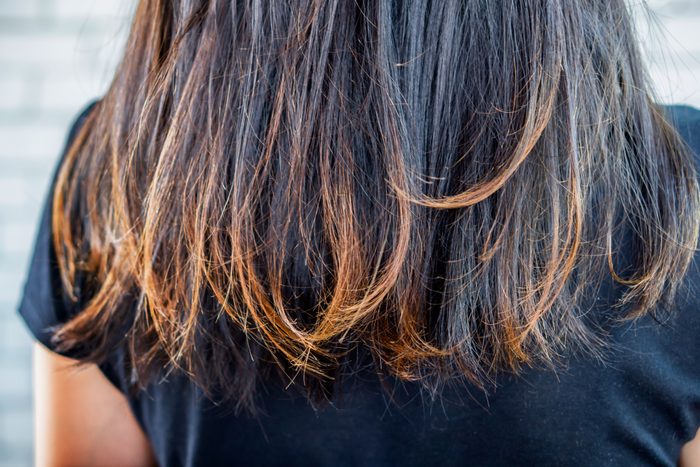
The stylist’s hair looks worse for wear
A stylist’s hair is a bit of an advertisement. “If your hairstylist has really damaged hair, it could be a red flag, because it could indicate that they don’t know how to take care of their own hair properly,” says Michelle. “This could reflect how they’d mistreat your hair.” One thing to keep in mind: You should be looking at the condition of their hair—not the actual style. Dry, brittle, damaged tresses should worry you. They have access to great hair masks for damaged hair and other tricks that should help them avoid an unkempt appearance. So if their hair is looking not-so-great, it’s dicey. But not liking their cut or color isn’t the same thing. You may just have different style preferences, and that’s totally OK.
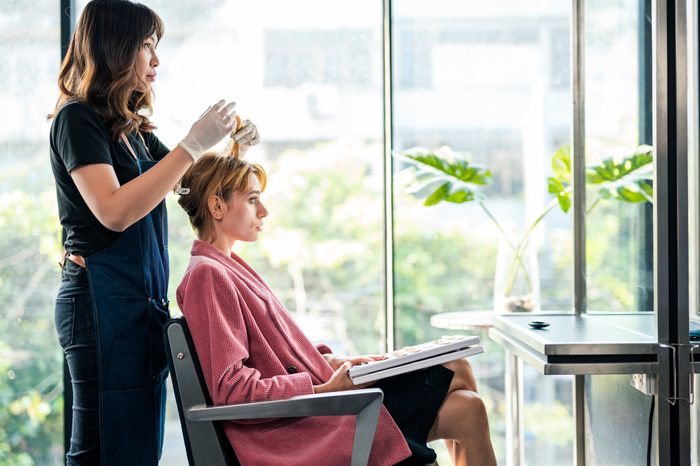
The stylist’s nervousness makes you nervous
Accidentally dropping a brush? No big deal. Anxiously looking at a pair of scissors and biting their lip every time they make a snip? Yikes. “If your stylist seems nervous or unsure of how to use tools, they may not be properly trained,” says Michelle.
As they move about their station, look for signs that they are at ease. If they’re using a tool like a hair-straightener brush, they should look like they do it all the time. The same goes for getting you set up in your chair. Clipping on the cape should be second nature for them, as should raising and lowering the chair.
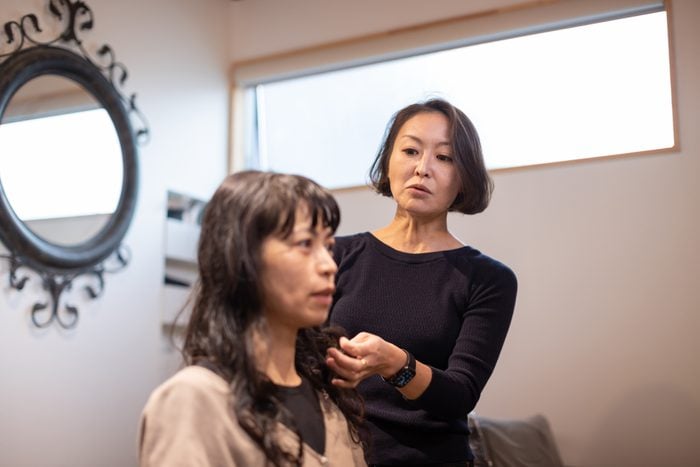
The stylist doesn’t solicit feedback
Once your stylist has finished up, they should initiate another consultation, turning you toward the mirror, and then giving you a handheld mirror so you can look at the back of your head. “By asking what you think of the result, it helps ensure that you both are on the same page and that you are happy with the results,” says Michelle.
But what if you aren’t thrilled with the outcome or think it’s a flat-out bad haircut? That’s what makes this step even more important. You should feel free to speak up about what’s not working for you. In turn, they should offer suggestions on how they could alter the cut so you like it more. Michelle says no good stylist should bristle at this kind of feedback.
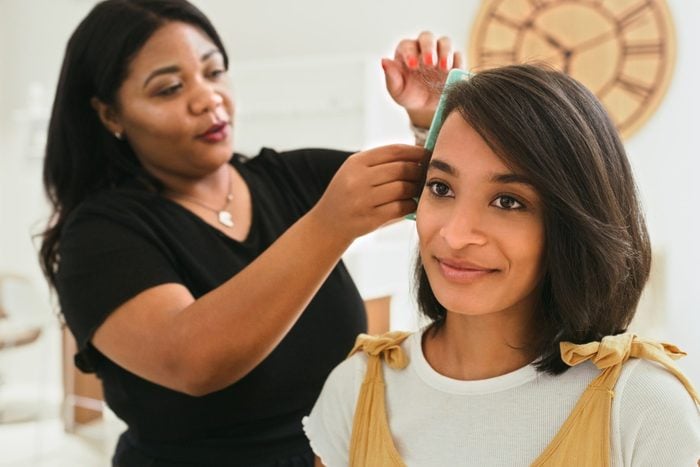
The stylist doesn’t discuss aftercare
At the end of your appointment, a good stylist should discuss aftercare with you. This information will be customized to your hair’s needs and your cut. For example, they may suggest the best shampoo and conditioner for your tresses or give you a few tips on how to use a curling iron to recreate the waves they added to your style.
“How you treat your hair at home has a dramatic impact on the health of your hair,” Palomino points out. So when a stylist shares this kind of info, it’s a sign that they’re really looking out for you and your strands.
Sources:
- Natalie Palomino, master stylist and founder of North Authentic
- Shantise Michelle, celebrity hairstylist
